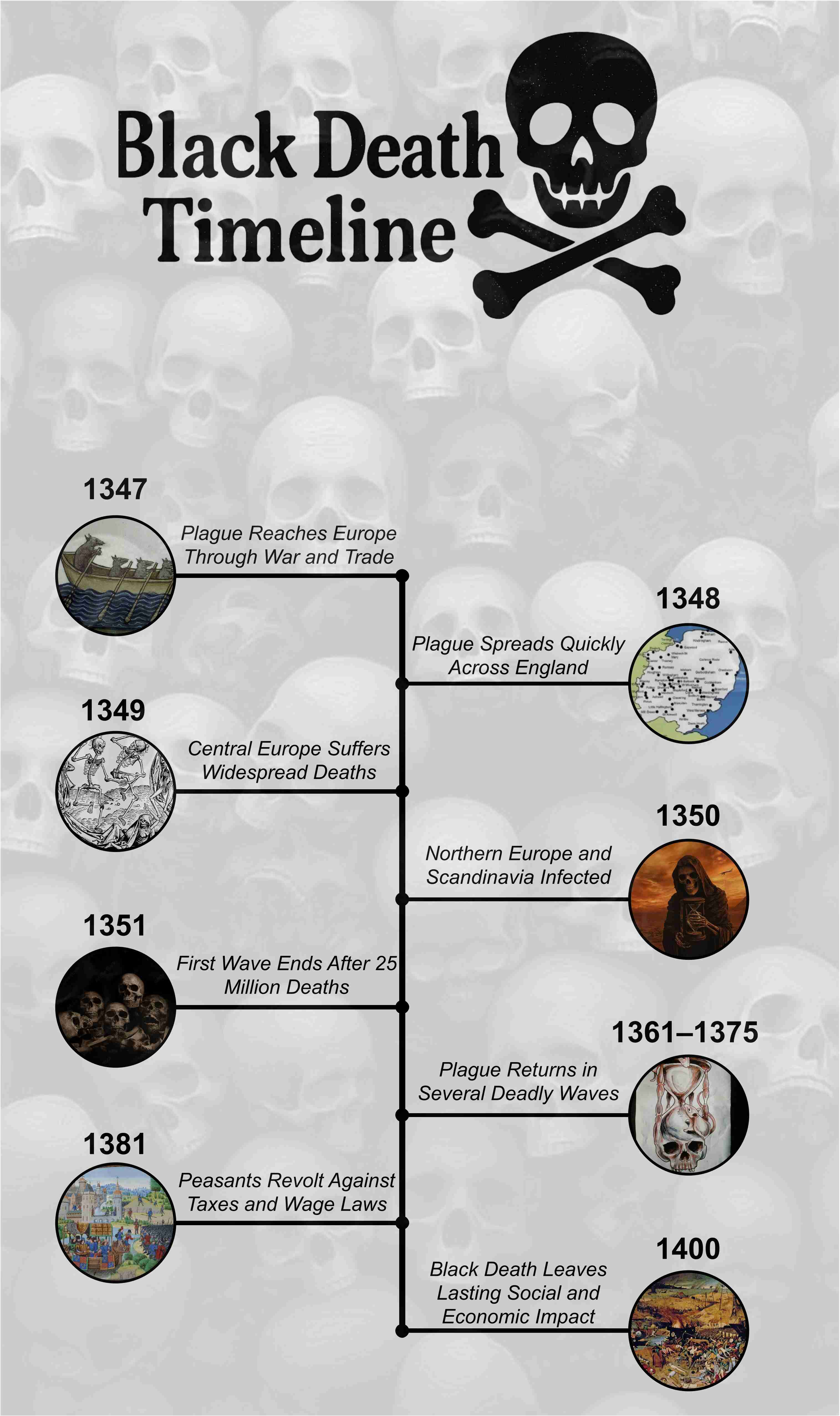The Black Death struck Europe between 1347 and 1351, killing almost one-third of the population. Cities became ghost towns. Villages disappeared. People didn't know who would survive or how to protect themselves. The plague didn't just kill; it disrupted trade, society, and daily life. Fear spreads faster than the disease itself. Even Central Asia and the Middle East felt its deadly impact.
The first wave didn't end the nightmare. Waves of the plague returned over the next decades. Communities struggled to cope with constant fear and uncertainty. Economies shifted, labor shortages changed social life, and Europe entered a new era. Life after the Black Death was unrecognizable, leaving scars that lasted for centuries.
In this article
The Complete Black Death Timeline
In the mid-1300s, a silent killer spread across continents. It came from Central Asia and traveled along busy trade routes. By the time it reached Europe, no one was ready. Cities shut down. Villages vanished. Fear ruled every street. This was the Black Death.
In just a few years, it killed millions and left Europe changed forever. Society broke apart, but new changes also began. This timeline explains the spread, the fear, and the lasting impact of the plague.
1347: Plague Arrives in Europe
The Black Death entered Europe through the Crimea. Mongol armies attacking the Genoese port of Kaffa brought the disease with them. Some stories say infected corpses were catapulted over the city walls. Genoese traders fled by ship, carrying the plague to Sicily and other ports. Once it landed, the disease spread quickly inland, terrorizing towns and villages.
Panic spread faster than the infection. Cities tried to lock down, but nothing worked. Merchants and travelers unknowingly carried the disease to new regions. Europe was entering a nightmare. Communities faced a terrifying reality, unsure how to survive the invisible enemy.
1348: Reaches England
The plague raced across southern Europe, hitting Italy, France, and Spain. A ship docked in Dorset, England, carrying the deadly bacteria. From there, it spread to Bristol and other towns. Diaries like those of Florentine merchant Pepo d'Antonio di Lando recorded families wiped out almost overnight. Death did not discriminate between rich or poor, everyone was at risk.
People tried to flee or hide indoors. Markets emptied, and churches overflowed with the sick. Life as people knew it vanished. Survival became the main focus, and fear became a constant companion. The Black Death was no longer a distant threat; it had arrived at every doorstep.
1349: Central Europe is Hit
Central Europe suffered next. Austria, Hungary, Switzerland, Germany, and the Low Countries all faced devastating outbreaks. London endured its worst months between February and May. Streets, homes, and churches overflowed with the sick. Mass graves became necessary as bodies piled up faster than anyone could manage.
Entire towns emptied. Fear dominated daily life. Survivors struggled to comprehend the scale of death around them. Social structures collapsed, and life had changed permanently. The Black Death proved just how fragile human society could be in the face of disease.
1350: Northern Europe Feels the Plague
Northern Europe could not escape the plague. Scotland, Scandinavia, and the Baltic countries all suffered. Even small villages and islands faced devastation. Fields were abandoned, towns emptied, and death reached every corner.
Families were torn apart, and communities fractured. Daily life became a struggle. The plague altered society, economies, and social norms. People had to adapt quickly to survive in a world that no longer resembled the one they knew.
1351: First Wave Ends
The first wave of the Black Death slowed in 1351. The toll was catastrophic. Roughly one-third of Europe's population, around 25 million people, had died. Cities like Paris lost half their residents. Many villages disappeared entirely. Homes, farms, and shops were abandoned.
Survivors faced grief, fear, and uncertainty. Societies struggled to rebuild while knowing the plague could return. Life had been changed forever. Communities bore scars in both their population and their economy, shaping Europe for generations to come.
1361 - 1375: Recurring Outbreaks
The plague returned repeatedly between 1361 and 1375. Later outbreaks were less deadly than the first wave but still claimed thousands of lives. People could never feel fully safe, and daily routines remained fragile.
Labor shortages increased wages. Workers gained bargaining power, and the feudal system began to weaken. Communities had to adapt to changing conditions. Even smaller outbreaks caused social and economic disruptions. The Black Death continued reshaping Europe long after the first wave.
1381: Peasants' Revolt
After the plague, authorities tried to control wages and taxes. Workers grew frustrated. In June 1381, peasants in England revolted, marching on London to demand fair treatment. Though the revolt was crushed, it showed that ordinary people could challenge authority.
The Black Death had changed the balance of power. Workers gained influence, demanded fair wages, and challenged old hierarchies. Life was different, and the revolt reflected the broader social transformations triggered by the plague.
1400: Lasting Impact
Europe looked very different by 1400. England's population had halved. Around 1,000 villages vanished. Farms were abandoned, towns deserted, and labor shortages gave workers more influence.
The Black Death didn't just take lives, it reshaped society, culture, and the economy. Survivors adapted to a new reality. Governments, communities, and individuals learned to navigate this changed world. Its lessons about survival, resilience, and human vulnerability lasted for centuries.
How to Make Black Death Timeline in EdrawMax?
The Black Death was one of history's deadliest pandemics. A timeline helps you see how it spread across Europe and what happened from 1347 to 1400, step by step.
If you're new to this, EdrawMax, an excellent timeline creator, can make it easy. You can create a clear, visual timeline in just a few steps. So, let's walk through how to build your own Black Death timeline quickly and effectively.
Step1
- Open a Blank Workspace
- Open EdrawMax on your computer, and sign in (or create an account if you're new).
- Click New on the left panel.
- Choose Blank Drawing to start with a clean canvas for Black Death timeline.
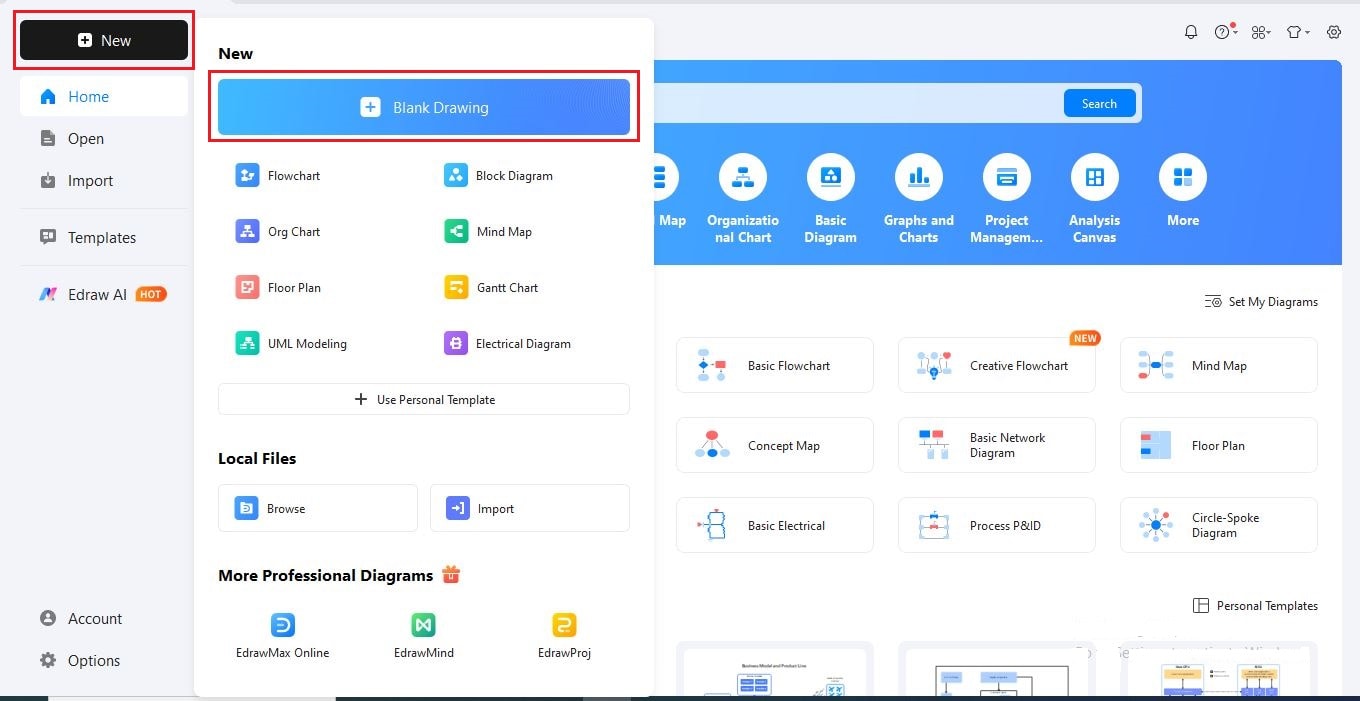
Step2
- Add a Background Image
- Let's set a historical background to give it a historical look.
- Go to the Insert tab in the top toolbar.
- Select Picture > Local Pictures and upload an image.
- Adjust transparency by clicking Adjust on the floating toolbar, and lock it with Move to Layer so it stays in place.
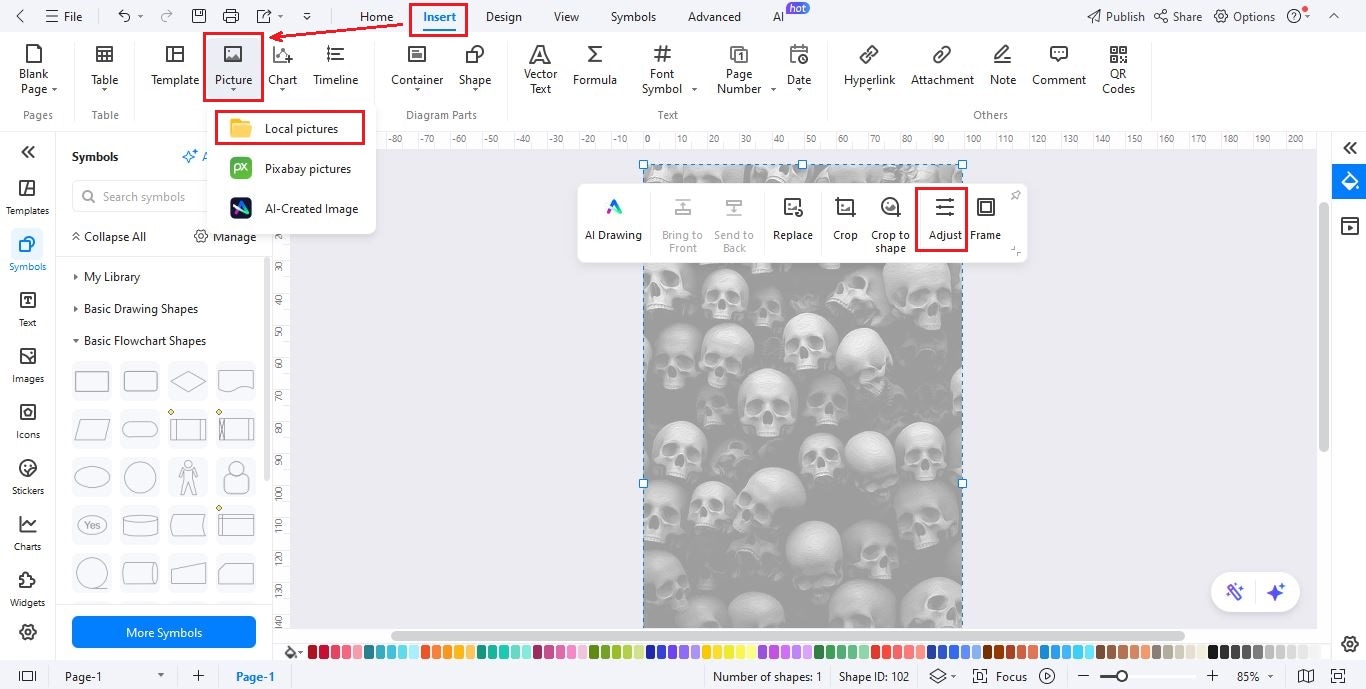
Step3
- Add a Title for the Timeline
- Every timeline needs a clear heading.
- You can add text or upload an image. Go to Insert > Picture > Local Pictures and upload a heading image or stylized text graphic.
- Optionally, enhance your title with a symbol such as a skull, cross, or medieval icon.
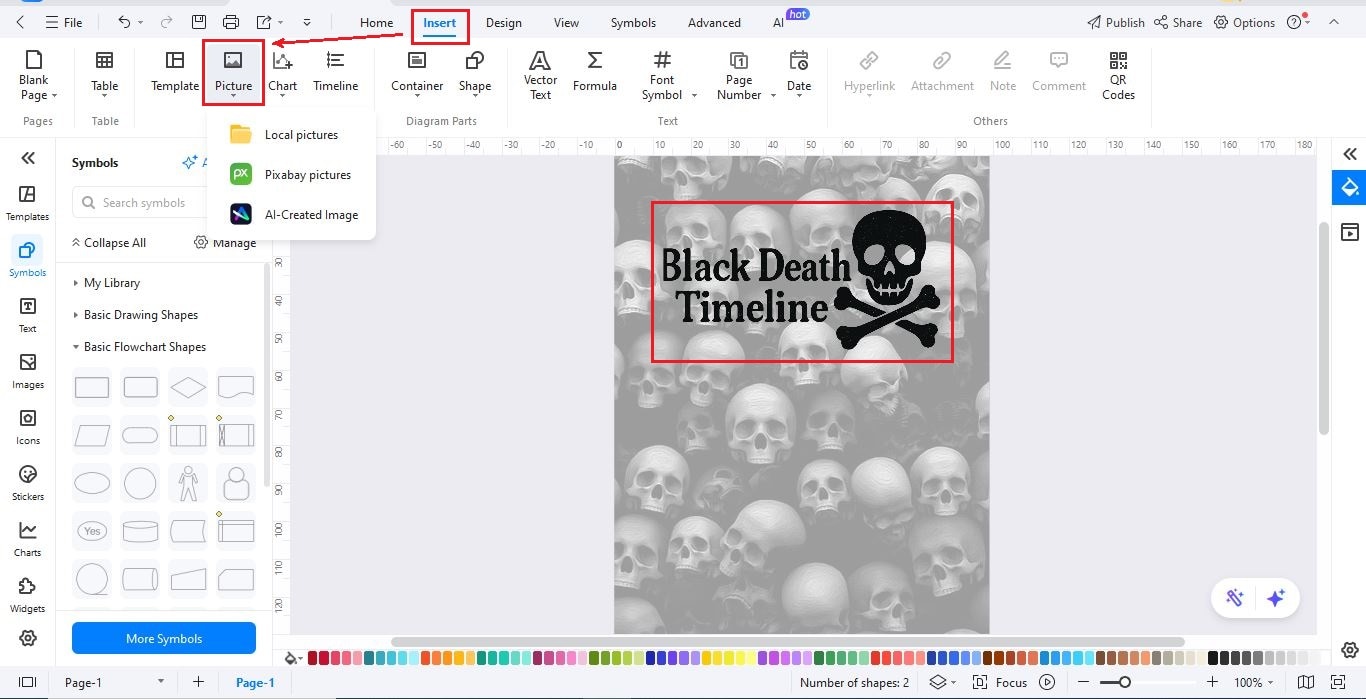
Step4
- Insert the Timeline Layout
- Now, let's build the structure for your Black Death events.
- Click Insert in the top menu.
- Select Timeline and scroll down.
- Choose Vertical Timeline, and pick the 4th option, which includes images.
- Click OK to add it to your canvas.
- Click the timeline, and a toolbar will appear to customize the timeline structure.
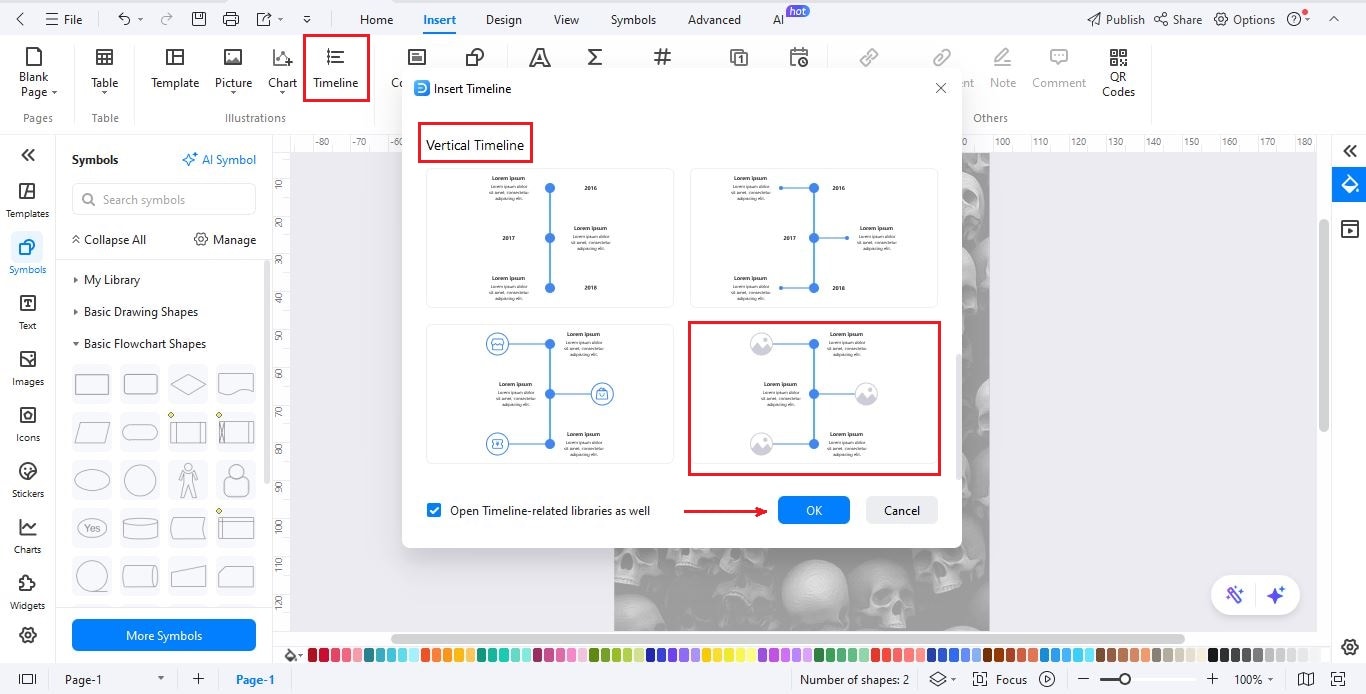
Step5
- Add Text to Events
- Time to fill in key historical dates.
- On the left editing panel, click Text.
- Use Click to Add Subtitle for the year.
- Use Click to Add Body for a short description.
- Continue adding major events through 1351 and beyond.
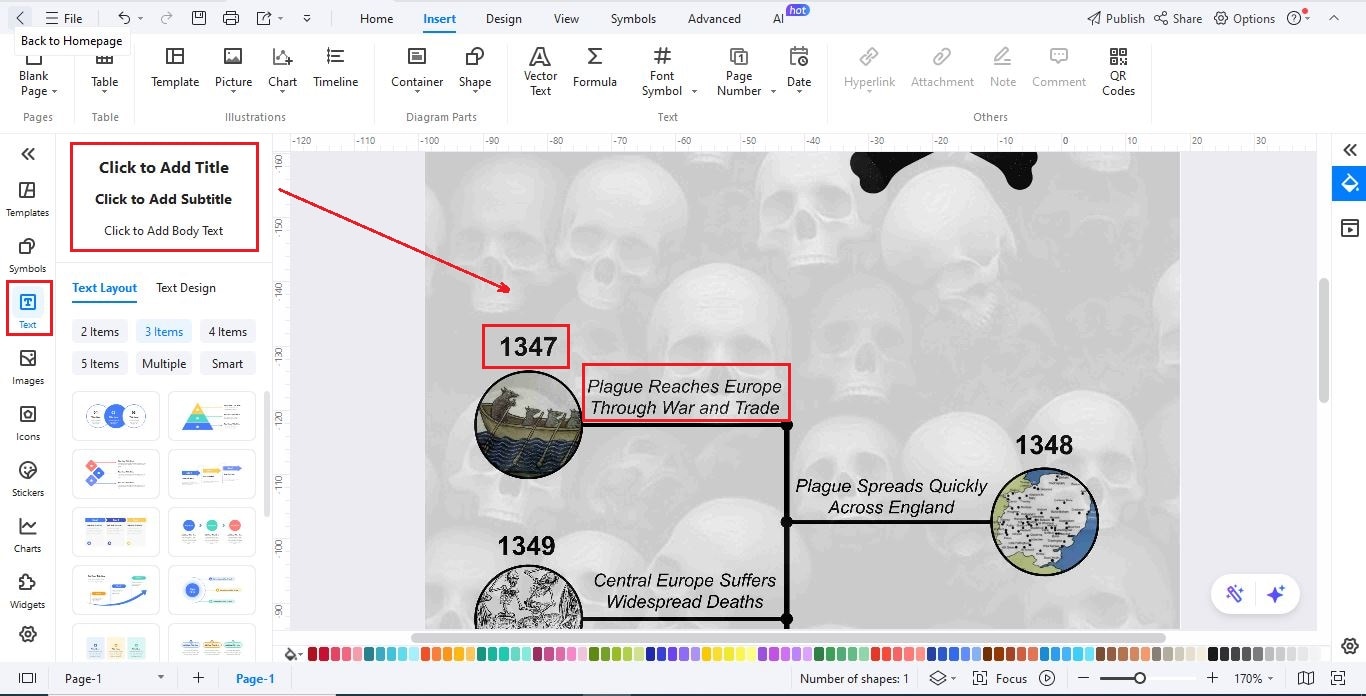
Step6
- Insert Thumbnail Images
- To add thumbnail images to make the timeline engaging, go to Insert > Picture > Local Pictures and upload event-specific images.
- Use Crop to Shape to style the thumbnails into circles or frames.
- Add images for each milestone.
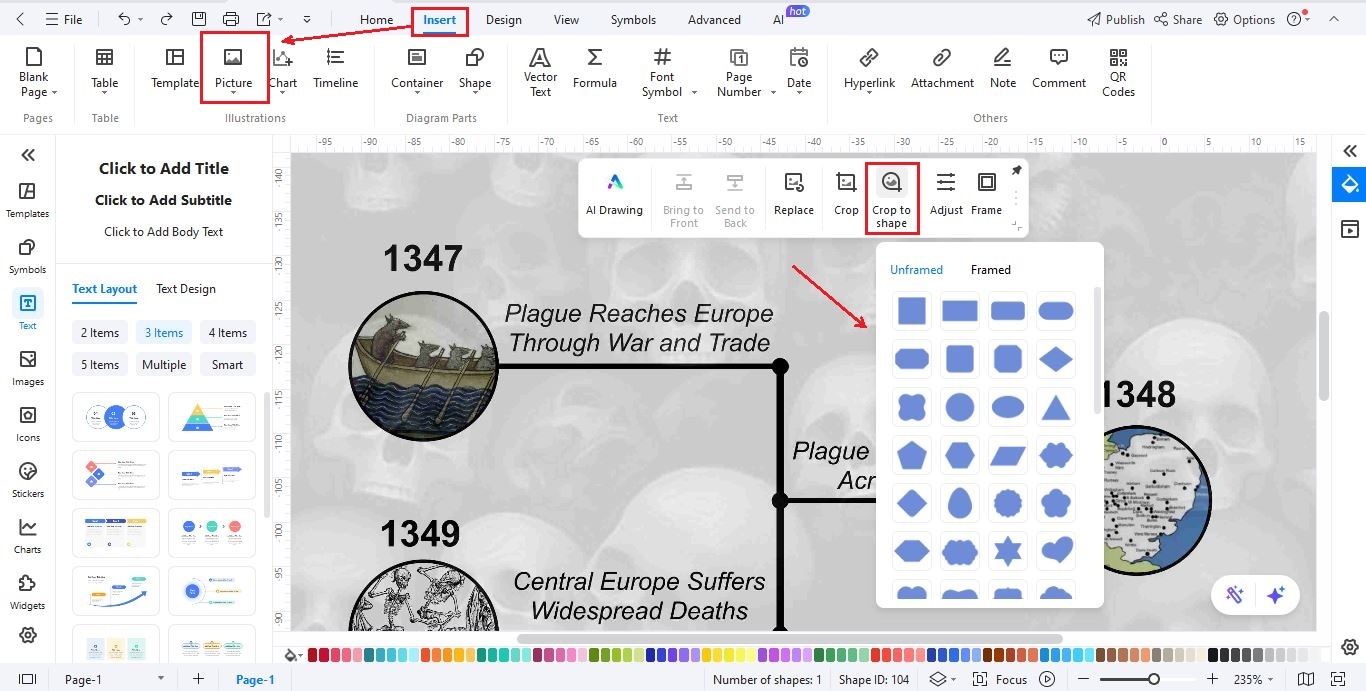
Step7
- Save, Share, or Export
- From the File menu, click Save to store an editable version.
- Click Share (top-right) to send it directly to others.
- To export, go to File > Export and choose PNG, PDF, SVG, HTML, Visio, or Excel.
- Click Publish to share your timeline to the EdrawMax community for others to view.
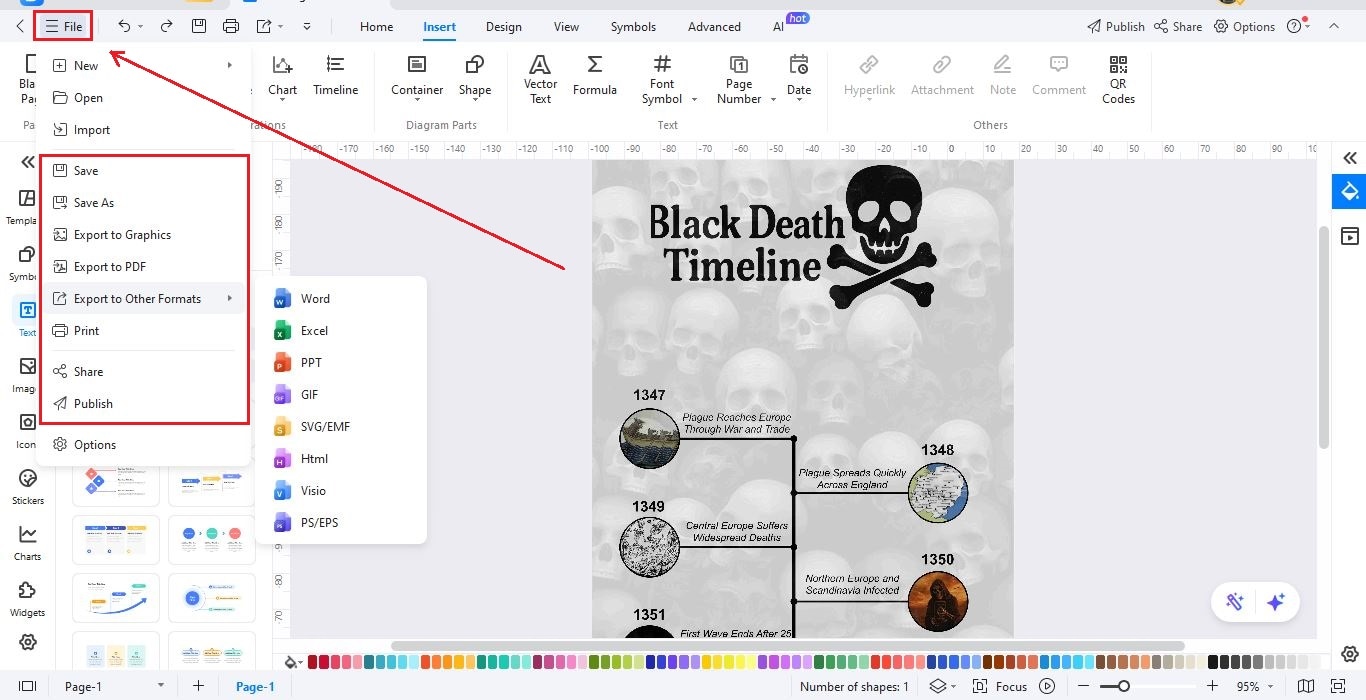
Final Thoughts
The Black Death was one of the deadliest disasters in history. It left Europe scarred with loss, grief, and fear. Villages disappeared. Families were broken. Millions were gone.
But it also changed society. Wages rose, old systems broke, and new demands for rights began. Out of tragedy came transformation. The Black Death was not just an end, it was also the beginning of a different Europe.
If you want to explore the full Black Death timeline in a clear and visual way, try EdrawMax. It makes history easy to see and understand.




